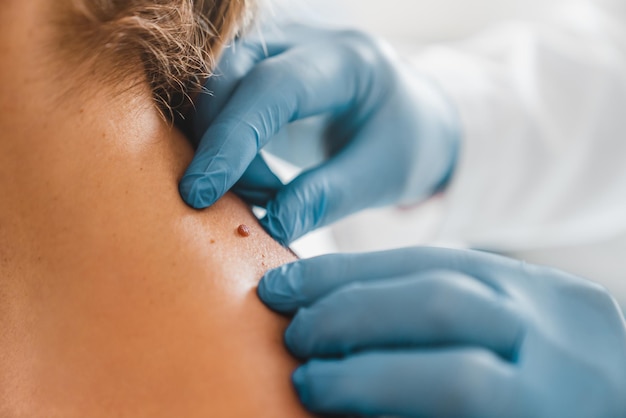Introduction
Moles—most of us have them. Some are tiny, barely noticeable. Others are right in the middle of your face, making their presence known. While most moles are harmless, they can be annoying, especially if caught on jewelry or rubbed by clothing.
Maybe you’ve got one you’re self-conscious about. Or maybe a mole has changed in size or color, and now you’re wondering if it’s something to worry about. Either way, you’re not alone. When considering removal and the safest ways, it’s worth exploring the Best Laser Ablation for Warts, Moles, Milia, and Skin Tags Treatment in Islamabad to better understand your options and make an informed decision.
What Are Skin Moles?
Moles are just little clusters of skin cells with extra pigment. That’s why they’re darker than the surrounding skin. Some people have only a few, while others have dozens. They can be flat or raised, smooth or bumpy, light brown or almost black.
Most moles stay the same for years, and some may even fade over time. But if a mole starts changing—getting bigger, uneven, or itchy—it’s a sign to get it checked out.
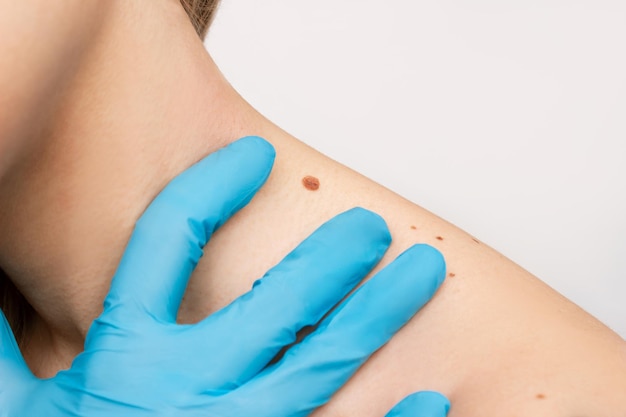
Different Types of Moles
Not all moles are created equal. Here’s a quick breakdown:
- Flat Moles: Smooth and usually brown or black. They blend in with your skin.
- Raised Moles: These stick out and can get irritated by shaving or clothing.
- Congenital Moles: Moles you’re born with. They’re usually harmless but should be monitored for changes.
- Atypical Moles: These have irregular edges or multiple colors. They’re not necessarily dangerous, but they can be more likely to turn into skin cancer.
- Cancerous Moles: These are the ones to watch. If a mole grows fast, has uneven coloring, or changes shape, see a doctor ASAP.
Why Do Moles Appear?
Ever wonder why some people barely have moles while others have tons? It comes down to three main things:
- Genetics: If your parents have many moles, you probably will, too.
- Sun Exposure: UV rays can darken existing moles and even trigger new ones.
- Hormonal Changes: Puberty, pregnancy, and aging can all lead to new moles appearing.
Moles are normal, but if one looks unusual or is in a spot that bothers you, you should have it removed.
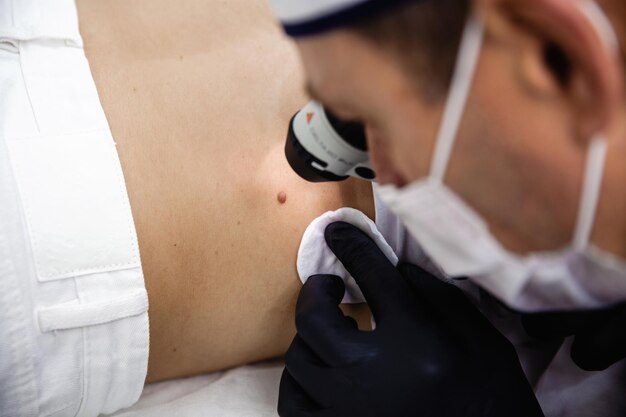
When Should You Remove a Mole?
Most moles don’t need to go anywhere. But here are some good reasons to consider removal:
- It’s changing in size, shape, or color.
- It bleeds, itches, or gets irritated often.
- You don’t like how it looks.
If a mole is suspicious, a doctor may recommend removal to test for cancer. If it’s purely cosmetic, there are safe ways to remove it without a noticeable scar.
Safe Ways to Remove Moles
Mole removal isn’t a one-size-fits-all situation. The best method depends on the mole’s size, type, and location. Let’s go over your options.
Laser Mole Removal
Perfect for small, flat moles, especially on the face.
A laser targets the pigment in the mole, breaking it down so your body can absorb it. Over time, the mole fades and disappears.

Why people like it:
- No cutting, no stitches.
- Minimal to no scarring.
- Quick healing—usually within a week or two.
Laser treatments work best for non-cancerous, shallow moles. Deep moles? You’ll need another option.
Dr. Taskeen Iqbal’s clinic in Islamabad specializes in laser mole removal, ensuring safe treatment with minimal scarring.
Surgical Excision
Best for deep or potentially cancerous moles.
A doctor numbs the area, cuts out the mole, and stitches up the skin. If there’s a chance of cancer, they’ll send the tissue to a lab for testing.
Pros and cons:
- Removes the entire mole, including its roots.
- Allows testing for skin cancer.
- It requires stitches, so healing takes longer.
- It may have a small scar.
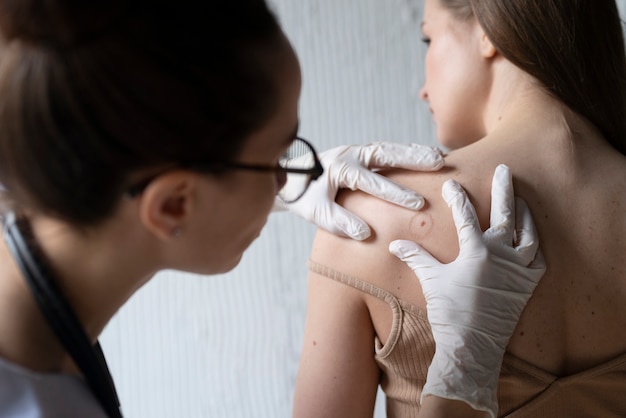
Shave Excision
Great for raised moles that stick out.
A doctor uses a medical blade to shave off the mole at the surface. No stitches are needed.
Why it’s a good option:
- Fast and easy.
- Minimal discomfort.
- There are no deep cuts, so healing is quicker.
Moles removed this way can grow back if the roots aren’t fully removed.
Cryotherapy (Freezing)
Best for small, non-cancerous moles.
A doctor applies liquid nitrogen to freeze the mole. Over time, it dries up and falls off.
Good to know:
- Simple and painless.
- No cutting or stitches.
- It may take multiple sessions.
- It can cause lighter skin patches.
Electrosurgery (Burning)
Best for small, non-cancerous moles.
A doctor uses a special tool to burn off the mole while sealing blood vessels to prevent bleeding.
What people like:
- Quick procedure.
- Less scarring than surgical removal.
- It’s not ideal for deep or large moles.

The Truth About Home Remedies
If you’re the DIY type, you might have Googled home remedies—but please don’t. Apple cider vinegar, garlic, and baking soda might sound harmless but can cause burns, infections, and scarring. Worse, they don’t remove the entire mole so that it can grow back. Instead, it’s safer to explore the Brown Moles on Face Treatment: Best Options for Removal recommended by professionals.
If you want a mole gone, let a professional handle it.
Dr. Taskeen Iqbal’s clinic offers professional mole removal treatments in Islamabad with expert care.
How to Prepare for Mole Removal
Before the procedure:
- Get your mole checked by a dermatologist.
- Avoid excessive sun exposure.
- Keep your skin clean and moisturized.
- Follow your doctor’s instructions.
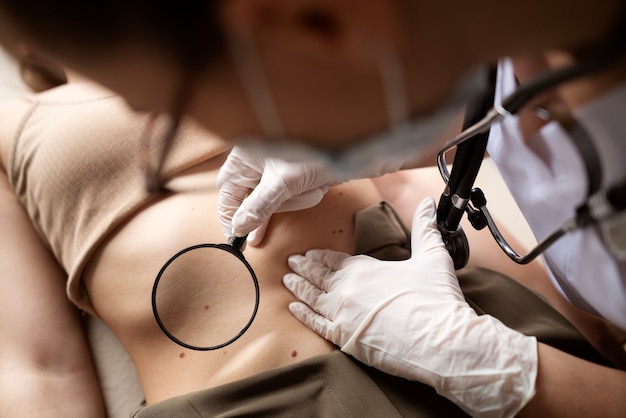
Healing & Aftercare
Healing time depends on the method:
- Laser Removal: 1-2 weeks
- Surgical Excision & Shave Removal: 2-4 weeks
- Cryotherapy & Electrosurgery: 1-3 weeks
Aftercare Tips:
- Keep the area clean and dry.
- Avoid touching or picking at the scab.
- Use sunscreen to prevent scarring.

Final Thoughts
Moles are a natural part of your skin. Most are harmless, but if one bothers you or looks suspicious, you should consider removal. In such cases, it’s essential to explore Black Mole Treatment: How to Safely Remove and Treat Moles to ensure you’re choosing a safe method and an experienced professional.
Dr. Taskeen Iqbal’s clinic offers trusted treatments with outstanding results for expert mole removal in Islamabad.
Schedule your consultation today and take the first step toward clear, healthy skin!
FAQs
Which treatment is best for mole removal?
The best treatment depends on the mole’s type and depth. Laser removal works well for small, flat moles, while surgical excision is best for deep or suspicious ones. Dr. Taskeen Iqbal offers expert advice to help you choose the safest option for your skin.
What kills moles naturally?
There’s no proven natural way to remove moles safely. Some home remedies can cause burns or scarring without fully removing the mole. Dr. Taskeen Iqbal provides professional treatments in Islamabad for safe and effective removal.
Can I remove a mole without surgery?
Laser therapy, cryotherapy, and electrosurgery can remove moles without cutting or stitches. The best method depends on the mole’s size and depth. Dr. Taskeen Iqbal specializes in non-surgical mole removal with minimal discomfort.
Is it safe to remove moles naturally?
Home remedies can be risky, leading to infections, burns, or incomplete removal. It’s always safer to consult a dermatologist for professional treatment. Dr. Taskeen Iqbal ensures safe mole removal with advanced dermatology techniques.
How can I remove moles in 7 days?
Some laser and freezing treatments can make a mole disappear within a week, but complete healing takes longer. Results depend on the mole’s size and treatment method. Dr. Taskeen Iqbal offers fast and effective mole removal solutions tailored to your skin.

